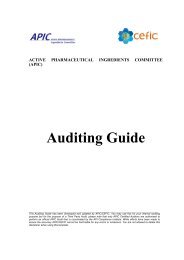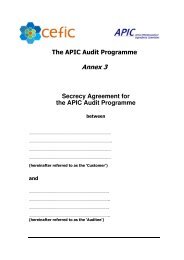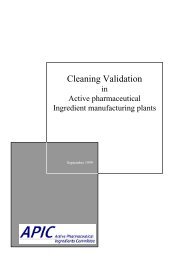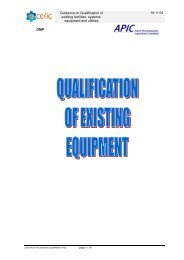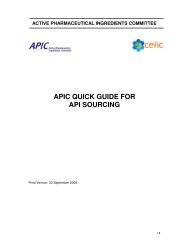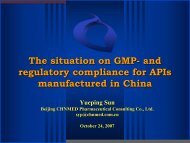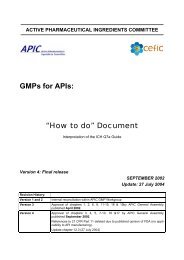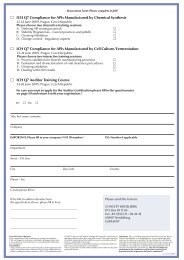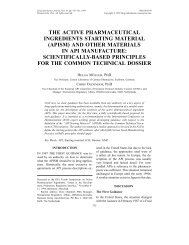Quality Management System for Active pharmaceutical
Quality Management System for Active pharmaceutical
Quality Management System for Active pharmaceutical
Create successful ePaper yourself
Turn your PDF publications into a flip-book with our unique Google optimized e-Paper software.
<strong>Quality</strong> <strong>Management</strong> <strong>System</strong> - integrating GMP into ISOF. <strong>Quality</strong> system per<strong>for</strong>mance measurementThe API industry is constantly changing. It is driven by the influence of technological advancesand constrained by regulatory requirements, global market <strong>for</strong>ces and local market pricingconsiderations. Setting and achieving medium and long term objectives is, there<strong>for</strong>e, not easy.When failures occur the true underlying cause(s) must be established if learning points are to beidentified and appropriate corrective measures applied.The EN-ISO 9001 QMS approach requires the adoption of a corporate philosophy ofcontinuous improvement leading to greater efficiency and increased customer satisfaction.Although the implementation of an effective QMS is complex, if done correctly andsuccessfully, it provides a sound basis <strong>for</strong> progression towards excellence. Experience hasshown that once a QMS has been introduced there is a risk that the pace of ongoingimprovement generated by the introduction of the QMS may falter and lose momentum. It is<strong>for</strong> this reason that an objective evaluation of improving per<strong>for</strong>mance is essential. A number ofpossibilities exist.At the strategic level, the corporate goal may be to achieve recognition through <strong>for</strong>mal ISOcertification as a stepping stone leading on to gaining the European <strong>Quality</strong> Award or the USbasedMalcolm Baldridge Award. Each involve detailed evaluation of systems per<strong>for</strong>mancewhich, in itself, allows <strong>Management</strong> to redefine processes which fail to meet per<strong>for</strong>manceobjectives.At the tactical level, an integral part of successfully implementing an effective QMS is the needto identify, agree and use realistic criteria <strong>for</strong> routinely monitoring per<strong>for</strong>mance trends. Somegeneral examples are provided below. The nature and emphasis of per<strong>for</strong>mance measures will,inevitably, vary from one company to another:• Improvement initiatives ongoing and/or completed• <strong>Quality</strong> failures e.g. cost of production failures per month• Percentage on-time delivery to customer• Failure costs per development project as % of project costs• Controlled documents overdue <strong>for</strong> review• Internal audit observation trends• Customer complaints (numbers, response times)• Laboratory retest rate• Process deviation frequency• Staff training status• Equipment breakdowns per month65



